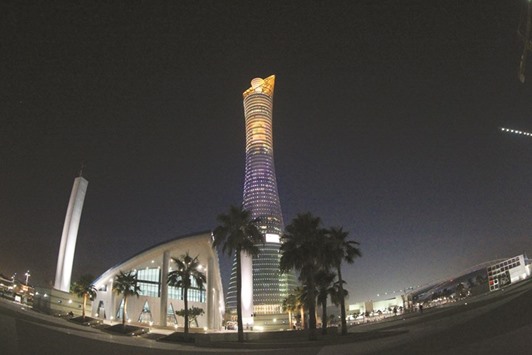Qatar’s credit profile is supported by robust growth, extraordinary high wealth levels, and strong buffers but its debt levels are comparatively high and reform plans present implementation risks, according to Moody’s, an international credit rating agency.
Despite the “negative” effect of a protracted period of low oil prices, Qatar’s overall credit profile remains consistent with ‘Aa2’ rating on expected continued strong growth, extraordinarily high wealth levels, lower vulnerability to oil price shock and a fiscal policy that will shield sizable buffers, Moody’s said in a report.
Highlighting that Qatar’s strong growth will be driven by continued large infrastructure investments, ahead of 2022 FIFA World Cup; it said “we forecast average annual real GDP (gross domestic product) growth of 3.6% for 2016-20, reflecting zero growth in oil and gas production from 2017, as well as a decline in real growth in the non-oil sectors over the forecast horizon, averaging 6.7% in 2016-20, down from 10.1% during 2011-15.”
After two years of contraction, the nominal GDP growth is slated to turn positive again from 2017 onwards, with it reaching its 2014 levels by 2019.
Factoring in Qatar’s high wealth levels to facilitate roll-out of reforms; it said “in our view, these levels of wealth provide a significant buffer and should help the government introduce subsidy reforms and other revenue-enhancing measures, such as fee increases for government services.”
Moody’s said Qatar’s comparatively low fiscal and external break-even oil prices, at $53 and $45 per barrel respectively, on average for this year and next, support its view that fiscal and external current account balance trends will turn positive from 2017.
“We forecast that Qatar’s fiscal deficit will fall from 10% of GDP in 2016 to less than 4% by 2018 and that the current account deficit will drop from 6% of GDP to 3% over the same period,” it said.
Finding that expected rise in debt will still be less than a third of the Qatar Investment Authority’s (QIA) assets; it said the likelihood that the government will choose to fund fiscal deficits via debt issuance than by drawing down QIA assets, estimated at around $300bn (around 180% of GDP) at the end of 2015, will help to keep the country’s very strong net creditor position intact.
“Under our baseline scenario, Qatar’s government debt-to-GDP ratio will rise to 54% by 2017, almost double the median for Aa2-rated peers. We also expect that the combination of robust growth and fiscal consolidation measures will lead to a reversal in the government debt trajectory from 2018 onwards and lower the debt burden to 44.5% of GDP by 2020,” it said.
However, Qatar’s debt levels are comparatively high and reform plans present implementation risks, it said, adding “risk of government being unable to achieve fiscal and economic objectives outweighs risks of a positive shock.”
Although Qatar has implemented several reforms since 2012, focused on cutting implicit subsidies for fuel, electricity and water; Moody’s said the broader aims of reducing current spending on public-sector wages and salaries (around 20% of total spending in 2014 and 2015) will prove more challenging.
Moreover, the “limited” room to cut investment spending further would pose downside risks to growth and run counter to its economic diversification strategy. As such, there are downside risks to Moody’s fiscal deficit and government debt projections.
Terming the lack of a clear financing plan over the coming three years as another risk factor; it said while Qatar has issued in international markets in the past, the current low oil price environment is affecting all of its regional peers and is thus increasing competition for funding.
“Together with tightening domestic liquidity, we expect that this backdrop will probably lead to higher funding costs for both domestic and external funding, and together with rising debt levels will push up debt-service payments in the future,” it said.

The Aspire Tower is pictured lit in the colours of the Brazilian flag in celebration of the 100 days before the 2016 Rio Olympics in Doha on April 27. Despite the u201cnegativeu201d effect of a protracted period of low oil prices, Qatar’s overall credit profile remains consistent with ‘Aa2’ rating on expected continued strong growth, extraordinarily high wealth levels, lower vulnerability to oil price shock and a fiscal policy that will shield sizable buffers, Moody’s has said.


